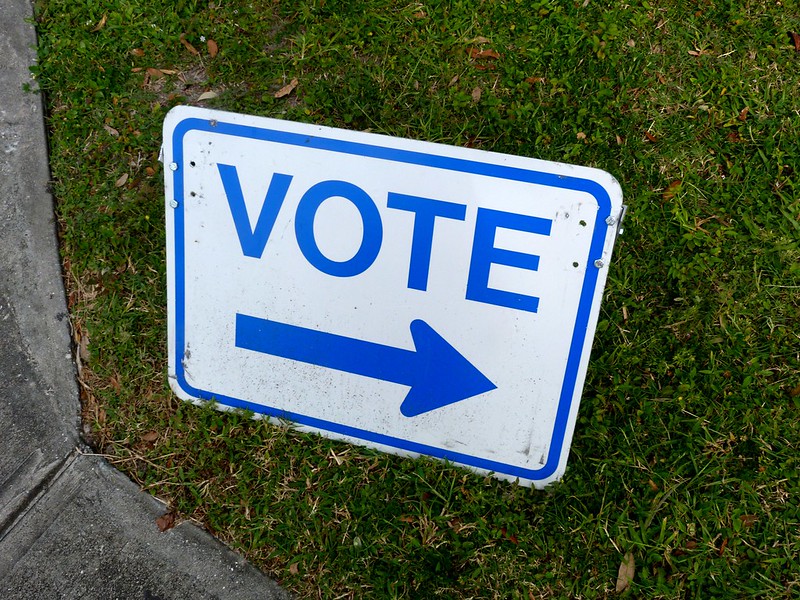Levers of Power: How the 1% Rules and What the 99% Can Do About It
Kevin A. Young, Tarun Banerjee, and Michael Schwartz
Verso, $29.95 (paper)
Democrats have long answered public outcry over our battered social contract with a simple imperative: vote. The implication is that voters should rally to the candidate promising to fight the status quo and trust in their agency once elected. In their new book Levers of Power: How the 1% Rules and What the 99% Can Do About It, historian Kevin A. Young and sociologists Tarun Banerjee and Michael Schwartz scrutinize the notion—resurgent each campaign season—that electoral politics can effect real change for the better. Reflecting largely on the administration of Barack Obama, the book shows how economic and political elites have embedded within policy circles a business-friendly negotiating process that even reform-minded officials can’t surmount. What emerges is a stark depiction of corporate leverage in which “the same fundamental patterns characterize U.S. politics regardless of who is in office.”
Economic and political elites have entrenched a business-friendly negotiating process that even reform-minded officials can’t surmount.
By focusing on the Obama administration, Levers of Power establishes how policy constraints interlock during transitions of presidential power—even when appointees change—while also demonstrating how leaders elected with a mandate for progressive reform acclimate to the norm, especially in the absence of organized social movements demanding accountability from legislative majorities. In the euphoria that followed Obama’s election on the campaign slogan of “hope and change,” liberal media stoked expectations for government action analogous to the New Deal in order to fight the Great Recession. Yet as these authors show, across issues that had public support for bold reform, Obama revealed a conservative disposition that prioritized “business confidence”—even during two years of a Democratic majority in the House and Senate—in the hope that a favorable regulatory and tax environment would prompt the investments desperately needed for recovery.
What explains this gap between popular expectations and Obama’s actual record? One might point to a range of factors, from ideological commitments to personal character and the nature of congressional negotiation, but Levers of Power highlights Obama’s susceptibility to perhaps the most powerful negotiating tactic of economic elites: the threat of capital strike, which pulls investment from the economy and can lead to, or deepen, a recession. A kind of legal blackmail, capital strikes preempt elected officials from risking confrontation with the most predatory capitalists—often concentrated in the fossil fuel, health care, and financial services industries. In a global economic system bereft of capital controls and replete with tax havens, capital strikes portend economic gloom and derail presidential authority.
This configuration chills even moderate proposals to improve public welfare and reduce inequality: the message is that workers and consumers will be made to suffer one way or another from higher corporate taxes, new or more strongly enforced regulations, or fiscal policy that “distorts” market incentives. Through readings of the Obama administration’s personnel choices and press statements, Levers of Power shows how concern over disinvestment dominated the priorities put before the Democratic congressional majority of 2009 and 2010. Faced with the dilemma of major firms sitting on trillions of dollars needed to foster recovery, the administration sought to placate them at every stage.
Young, Banerjee, and Schwartz emphasize that the threat of disinvestment distorts policy priorities not only directly but also indirectly, by shaping presidential appointments to the cabinet and regulatory agencies—thus further constraining the horizon of political possibility. Under Obama, many of these unelected officials—including chief of staff Bill Daley, former World Bank chief economist Lawrence Summers, and others on the National Economic Council—had spent their careers rotating between the private sector and government.
As shown in the cases of the Affordable Care Act (ACA) and the Dodd-Frank financial reform, these advisors acquire significant veto power over policy. Since presidential appointees aren’t accountable to the public, the consultative nature of their authority uniquely embeds elite economic interests in policy discussions. Particularly at the outset of a new administration, these appointees influence what political scientists call path-dependent decisions in the executive branch, making it harder for an administration to reverse course or adopt a new set of priorities. Their congressional counterparts are likewise close to business—whether through aides sourced from industries seeking lighter regulation, or lobbyists armed with campaign funds.
The capacity of private interests to purchase access to policymaking in all these various forms limits what measures public officials consider and in turn controls the political debate presented for public consumption. Young, Banerjee, and Schwartz are careful about how they frame this familiar critique. It isn’t a conspiracy, they stress, but a process of negotiation, insulated from public scrutiny after decades of refinement, that contracts the range of policy alternatives and dilutes the few reforms corporate stakeholders will tolerate.
While Levers of Power’s examples of systemic policy capture unequivocally demonstrate how the Obama administration favored elite interests rather than the Democratic base, the authors’ main aim isn’t to disabuse readers of sympathetic historiographies (including the administration’s own assertion in its 2017 Economic Report of the President that “President Obama has overseen the largest increase in Federal investment to reduce inequality since the Great Society programs of the Johnson Administration”); that task has been performed many times already by many others. Rather, their more specific objective is to cast light on the layered structure of capitalist governance impervious to the accountability elections are supposed to represent.
The threat of disinvestment distorts policy priorities both directly and indirectly.
In this important respect Levers of Power exposes the inherent problems of talk of “reform” and its opacity as political achievement. Reform implies a mitigation, not the elimination and replacement, of inequity in market society or law. In mature capitalist systems, reforms are parsimoniously designed because the intent is to repair critical sectors without drawing too much scrutiny to the more fundamental problems and injustices created by capitalism. Invariably, the political objective is to harmonize interests among capitalists and curb practices that have become too parasitic within a given sector.
Thus, the “corporate compromise,” as Young, Banerjee, and Schwartz put it, is not a concession to activist government on behalf of public welfare but rather a means to restore equilibrium between rent-seekers through technocratic adjustments. Despite upholding that compromise, the ACA, Obama’s signature reform, passed on a party-line vote, leaving the false impression that it didn’t contain plenty of compromises designed to satisfy Republicans, who emphatically rejected it for political gain. Contrary to Republican propaganda, the ideological residue in the ACA—whose framework had partly evolved from Heritage Foundation proposals stretching back to 1989—was not in any way “socialist.” Instead it was consonant with maintaining generous profits for a sector that provides 12 percent of U.S. employment.
Levers of Power stresses that even after enduring the “sausage-making process” to become law, a reform can still be weakened during implementation. If corporate stakeholders are disappointed by the concessions they have extracted, they can mount legal challenges that delay a law’s enforcement. Legal challenges are also directed at regulations that don’t need congressional approval, which tends to embattle underfunded agencies. A case in point is the Environmental Protection Agency (EPA), which remains a constant target of the fossil fuel industries. With little will in Washington to address the climate crisis, hyper-extractive firms bought time through litigation until Donald Trump, a proponent of massive deregulation, won the presidency. Since then, the EPA has been subverted beyond recognition to serve the industries most responsible for the climate crisis.
Amidst the coronavirus pandemic and the sweeping devastation the Trump administration has wrought, some readers may find Levers of Power’s claim about the basic policy continuity between administrations myopic or even injurious. Elections rarely produce meaningful reform, but as the whole world has witnessed the last four years, they can certainly exacerbate regressive public policies, enable flagrant abuses of power, undermine democratic institutions, and normalize dangerous ideologies. It is undeniable that the pursuit of an anti-democratic constitutional order by radical libertarian oligarchs like the Koch brothers, as chronicled in Jane Mayer’s Dark Money (2016) and Nancy MacLean’s Democracy In Chains (2017), wins more leverage with a president and Republican Party that have shattered democratic norms.
But appreciating the full tragedy of deliberate institutional wreckage in the Trump era requires acknowledging a deeper truth: the custodians of governance by elite consensus, including within the Democratic Party, are the ones responsible for exposing the U.S. political system to precisely Trump’s kind of anti-system politics. Elite consensus after Keynesianism had guided political economy under the illusion that boom-and-bust cycles wouldn’t produce morbidities in the political system. But they have, as both parties have imposed neoliberal policies that deepen mistrust of government. This has emboldened plutocrats to back anti-government zealots for public office, cultivate rightwing justices, and hijack media discourse.
Instead of raising alarm over the link between free market ideology and the rise of rightwing extremism, most Democrats—including its Congressional leaders Chuck Schumer in the Senate and Nancy Pelosi in the House—maintain a reflexive search for “pro-market” solutions to our manifold problems. Their acquiescence to corporate power is reflected in research by social scientists such as Jacob Hacker and Paul Pierson, Suzanne Mettler, Alfred Stepan and Juan Linz, and Jeffrey Winters, who have all helped piece together how the top one percent have captured most economic gains in the past forty years. In distilling the mechanisms that have enabled this trend, Levers of Power demonstrates that they aren’t new but rather innate features of capitalism that intensify or abate in relation to social resistance.
In turn, the book clarifies what many leftists and other political commentators have concluded over the last decade: that obstructionist Republicans and their powerful benefactors were often not the primary barriers to reform. Instead, they only buttressed an institutionalized deference to the one percent that Democrats themselves willingly accommodated. The fact that many Democrats remain subservient during a global pandemic suggests that if Joe Biden wins the presidency, every conceivable tool needed to merely stabilize the system will have to meet the odious test of inspiring “business confidence.”
If elections can’t dismantle this trend, what can? The theory of change elaborated in Levers of Power rests on the viability of social movements and their own disruptive power. Contrary to the view that activists should channel their demands toward receptive politicians, the book argues that system-changing reforms are possible only through a countervailing power that imposes major costs on key capitalists (or state agencies with reputations to preserve). The authors substantiate this thesis in several case studies, most compellingly illustrated in the labor movement and the civil rights movement.
In the late 1930s, militant labor strikes in the auto industry shook leading capitalists like no previous wave of protest. Faced with the grim prospect that the Great Depression would deepen, manufacturers determined that a right to collective bargaining, enshrined in the Wagner Act but at the time weakly enforced, was an acceptable price to preserve capitalism. The battle over union rights had been protracted over Roosevelt’s first term, and Senator Robert F. Wagner, who “had both principled and pragmatic motives,” the Levers of Power authors write, was initially a “lonely voice” among Democratic legislators. New Dealers prioritized stabilizing the economy through financial reform, and the National Industrial Recovery Act and National Recovery Administration, which set industrial codes for fair business practices, largely depended on the good faith and cooperation of industrial titans.
While major strikes during the early New Deal prompted passage of the Wagner Act in 1935, the auto workers’ strikes of the late 1930s were more costly because “inter-union rivalry [had] increased union democracy, [spelling] disaster” for the leading corporations. Levers of Power underscores that “labor leaders competing for rank-and-file support were pushed to make more radical demands on their employers and to support more militant action on the shop floor,” thus compelling industry to accept “the lesser evil” of the National Labor Relations Board and its supervision of union rights. Organized workers, not political leaders, were the ones to give teeth to the rights inscribed in the Wagner Act.
A similar dynamic characterized the civil rights movement, although in that case it was strategic boycotts of prominent local businesses that drove their owners to abandon segregation. The 1963 Birmingham boycott was a major turning point: movement organizers had honed strategies from prior campaigns, targeting the merchants and industries that were most integral to the local economy precisely because their vulnerable position made them more willing than other elites to accommodate movement demands. “The mass demonstrations and sit-ins that accompanied the boycott,” Young, Banerjee, and Schwartz explain, “deprived downtown businesses of not only black customers but also many white customers, who were deterred from venturing downtown in the midst of black protests,” costing retailers hundreds of thousands of dollars a week. In turn, the scale of the boycott and the organizers’ “unity of purpose” propelled suffering businesses “to ‘pull around’ the politicians” to accept integration.
The costs imposed on Birmingham telegraphed the increased power of the civil rights movement, spurring more and more businesses in other Southern cities to desert Southern Democrats who continued to defend Jim Crow. Other factors further compounded the pressure on various local capitalists. Concern for the nation’s international image certainly influenced the Kennedy administration to threaten federal intervention, but more significant, Levers of Power contends, was “the judiciary’s increasing unwillingness to support racist violence and segregation, which reduced the efficacy of state repression in the South.” While the constant threat of white supremacist violence remained very real, more pronounced fissures between state actors yielded yet more space for civil rights activists to test, refine, and leverage their most effective strategies.
The rippling effects were clear: if businesses that were keen to continue the postwar economic development of the South were no longer vested in Jim Crow, civil rights activists could seize momentum at the federal level. Seeing that the once-absolute power of the South’s racial order was losing its primary fulcrum, liberals in Congress and the Johnson administration understood that the possibilities of legislative reform had improved—and that it had become vital to act lest the boycotts generated broader turmoil. By dividing Southern elites, Black activists had compelled liberal allies to pass the Civil Rights and Voting Rights Acts, which then empowered them to influence the impact of Johnson’s Great Society programs.
These examples underscore that the path to substantive reform most often entails a dialectic in which ratcheted, strategic mobilizations force private sector actors to break rank with conservative allies, leading them to tolerate concessions to activist demands at the same time that continued disruption generates acute pressures on would-be reformers to maximize those concessions. Effective social movements don’t solve the thornier problems of reform—how far it goes, its durability in the face of regrouped opposition—but they do force a showdown with and between political and economic elites, pushing into public view a new margin of accountability in which real strides toward improved conditions must be met.
Electoral work will always risk veering toward the pursuit of within-system reform without pressure from social movements.
As the resurgence of Black Lives Matter this summer proves to be the largest protest movement since the 1960s, Levers of Power’s overarching thesis is both sobering and instructive. Only sustained disruption to the explicit detriment of business will create opportunities to deepen democracy, as only then will mounting pressures to restore social peace force political elites to alter the “substance” of government to better reflect equity and justice. Indeed, this theory of change also reflects the contributions of many Black authors who have chronicled radical Black traditions and peoples’ movements against racism and poverty. From slave rebellions to anti-colonial movements, attacking the nexus of wealth and political rule has always defined the techniques and repertoires that repressed people have used to win freedom.
As Keeanga-Yamahtta Taylor wrote in June following the first uprisings against police violence in the wake of George Floyd’s murder, collective and sometimes violent protests have the power to catalyze “demands and aspirations for a society different from the one in which we live. Not only do the rebels express their own dismay but they also showcase our entire social dilemma.” Just as marginalized and working class people can’t rely on elections to advance equality, so too must protesters recognize that their strategies and actions can’t depend on elite sanction.
The electoral loss of Bernie Sanders’s two presidential campaigns, along with those of many other down-ballot progressives, suggests that a far-ranging leftwing electoral project will require at least another generation to reach fruition. Though essential, such electoral work will always risk veering toward the pursuit of within-system reform without proximity to, and pressure from, social movements that engage in direct action. Implicit, then, in Levers of Power is the belief that the disruptive, collective power of the oppressed is necessary to overcome the “depoliticization” of public policy that has so often characterized the neoliberal age. As the crises of democracy accelerate, the conflictual nature of politics is reemerging, drawing more and more people to decisions that demystify, and supersede, the tired theater of establishment politics.







